#learn cgi and vfx
Explore tagged Tumblr posts
Text
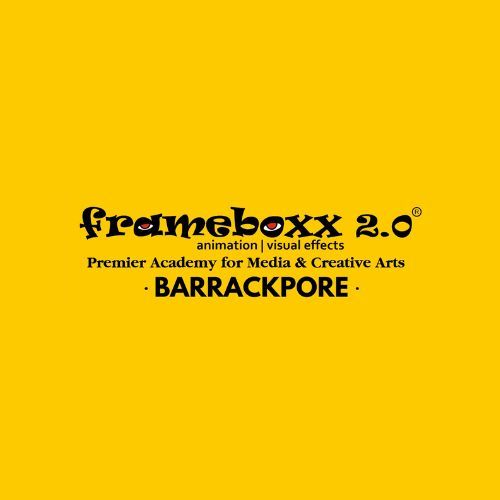
Frameboxx Barrackpore 2.0 - Animation Classes Barrackpore
Join Frameboxx Barrackpore 2.0 for comprehensive Animation Classes designed for aspiring animators of all levels! Our classes cover 2D and 3D animation techniques using industry-standard software like Adobe Animate and Autodesk Maya. With expert instructors guiding you through hands-on projects, you'll develop the skills and creativity needed to bring your ideas to life. Enroll today and step into the exciting world of animation!
#3d animation course#vfx and animation course#vfx animation course#learn 3d animation#3d animation and vfx courses#3d animation and visual effects courses#learn cgi and vfx#learn vfx and animation#vfx and 3d animation courses#animation learning course Barrackpore#best motion design courses Barrackpore
1 note
·
View note
Text
youtube
Curious about CGI? Want to learn how to create trending 3D videos?
This is your chance to learn & earn! Join our FREE Demo Workshop and learn key CGI techniques from industry experts! Call 9377937777 to Register.
🗓️ 28 Dec 2024 🕚 11.00 AM - 1.00 PM 📍 eQuinoxx Creative Academy, ISKCON Circle, SG Road, Ahmedabad 🌍equinoxxcreativeacademy.in
0 notes
Text
youtube
Got linked to these very good videos recently on all the fake branding around "No CGI" and "Practical effects" in big budget movies today - as is no shock to anyone virtually every single claim of "no CGI" in a movie today is just a complete lie (Oppenheimer is the only debatable exception). Jonas is a very good presenter, he respects your intelligence and has a breadth of cinema knowledge that makes this series more than its headline.
Something that I thought was interesting that he alluded to was a cool industry shift that has occurred around the ease of special effects meaning that people involved don't even know they are happening. If you were an actor in a movie in ~2010, and a shot was a "VFX" shot, you would see greenscreens/bluescreens, you would see rigging equipment, you would maybe wear a mocap suit or tracers or something. You yourself had VFX skills, you were part of the project. And audiences learned that too, they learned to expect to see bluescreens or behind-the-scenes footage of those things.
But that is increasingly outdated now - still used for ease or specific shots, sure, but its not necessary. You can completely redo the backgrounds, build rig models for actors, clone objects from the frame, and so on just from the native footage, the tech is that good. So you will sometimes shoot a scene and it will look normal to you, and then be changed in post, you don't even know. At one point he tangents to discuss how marketers will lie about the actors "doing their own stunts", which seems credible to audiences because they know that for stunts you do things like hiding the actor's face or having specific cuts to mask the actor switch. But they don't have to do that anymore! You can just composite the actor's face onto the body of the stunt double, and you don't notice. That old "trick" you had to tell isn't functional, and being used *against* you.
It really reminds me of Dan Olsen's idea of "Bakshi's Vision", where the distinction between an animated film and a live action film becomes too blurry even bother with. Obviously that won't become literally true, but you can see the shape of it more and more.
260 notes
·
View notes
Text
A Marvel Newcomer's Thoughts on Thor (2011)
>SPOILERS AHEAD<
Well, if I thought Iron Man 2 was lackluster, then this was just DULL. There were some good parts, yes, but most of the time, I prayed for my power to go out. The visual effects were amazing, the acting was good, but I was just... bored. The story was mid, and I was honestly just staring at my TV to study the VFX and see if it was over yet.
As a mythology fan, this was fucked every way but loose. Sure, this was written to be dramatic, but Jesus Christ. Odin raising Loki as his son was particularly baffling to me, as Loki and Odin are described as blood brothers in traditional Norse mythology. And yes, there are discrepancies to mythology, but this felt done solely to create drama. I was honestly just... lost for 90% of the film.
Alright, so random autism detail time:
I enjoyed the nod to Hawkeye in the scene with the hammer in the crater.
Tom Hiddleston as Loki was very good and I can see where Loki gets his clone powers from.
Why the fuck did Loki appear to kill himself??
Idris Elba as Heimdall was VERY hot with those amber contacts. Go Heimdall!!
The Bifrost looked like a realistic version of Rainbow Road from Mario Kart. It's almost like... the Bifrost... is a rainbow road........
I love Kat Dennings' snark.
The stunts were done very well. CGI was amazing.
How the fuck did Loki not know he was a frost giant??? I KNEW HE WAS A FROST GIANT (BECAUSE I READ THE MYTHOLOGY).
Josh Dallas did a great job with his whatever-the-fuck-accent-he-was-doing. Between that and the wardrobe choices, I genuinely did not recognize him until I opened IMDb. Which is wild, as I've rewatched Manifest, a show he had a leading role in, more times than I care to admit.
How many times did Loki cross Thor what in the Skibidi McFuck?? (Sorry, someone at work said that phrase recently and I'm making anyone who reads this know about it.)
My rating: 5/10. The movie was kinda boring, but it was something to watch. I'd rather watch this than watch paint dry, but I'd rather watch an entire 13-hour Otzdarva DBD tierlist without stopping than to rewatch Thor. It's not the worst thing I've ever seen (cough cough, the new Snow White film, cough cough), but this is dead last in my rankings thus far. The only real reason I liked it was because of the VFX. The plot was so convoluted that I felt like I got dropped into the middle of a random feud and I think my brain shorted out recalling all this shit.
At this point, I can't tell if I dislike superhero movies or if the ones I've seen are just... not for me. But I'm in too deep. I have four Lords in Marvel Rivals. I can't peel my eyes away. I need to learn about my loves Storm, Luna, C+D, and Adam... alas, Adam is in Guardians 3, and Storm is in X-Men, which is apparently different from the MCU (kill me). Please dear God, let the next movie recapture my interest. Amen.
16 notes
·
View notes
Text
I am so infuriated at the missed potential and opportunity for the AVP franchise!!!

We already had Dan Trachtenberg’s Prey to show us how successful this concept can be if delivered perfectly. And now they had an animated show in production that was cancelled. AN ANIMATED SERIES COME ON!!
It would have fit so well for the AvP aesthetic and action scenes. It would also give the opportunity to expand more of their lore. Shouldn’t that be the goal? Its what the animated Clone Wars and Star Wars:Visions is doing for the Star Wars Franchise!! Do they even want to make films anymore at this point??
I am just disappointed on and on at the current decisions that Disney is doing- Shelving and cancelling shows before they even see the light of day, not giving proper environment for their writers and CGI/VFX artists to be able to create and craft a well-written story.
They’re not making films for the audience or making films for Art’s sake anymore. Its all CAPITALISM now.
I just hope with every fire in my heart that the AVPverse gets out of Disney’s greedy hands and in the hands of a Studio that would LOVE and care for its universe, respect its characters-
Give us a unique Yautja that loves art! And is amused when he sees some paintings in Paris or hears an opera house on his first hunt on Earth!
Give us an animated episode of a Yautja on a hunt for Bad Bloods during Edo Period Japan!
Show us Yautja brothers in the beginning of their training and how they learn the values of an honorable hunter!
Take us to their homeworld, give us an aspiring Yautja matriarch who is eager to learn about their culture and their history with the Xenomorphs!
I just wish someone with the power and money would give so much love to this franchise because there is so much to tell and expand!
#Ive had enough with I just want to let this out- I sincerely just want AVP to be given more opportunities to tell their story#Studio not having a clue what to do with AVP? HIRE ME if yall out of ideas#I can rest peacefully if more Love was given to this Universe istg#Yautja#AVP#xenomorph#aliens#yautja predator#dan trachtenberg#Prey#Aliens Vs Predator#Aliens Vs Predators#Predator#Alien Vs Predator:Annihilation#shinji aramaki#jungle hunter#the predator#feral predator
314 notes
·
View notes
Text
youtube
Highly recommend this video series by a VFX supervisor on how CGI is actually used in modern film-making, as well as how studios, having grown wise to audiences disdain for "too much cgi" have started outright lying to you about how their films are "fully in camera/practical/for real"
Some highlights include:
Famously "fully built" Barbieland had several blue screen set extensions, as well as fully digital actors for wide shots (and WB even went so far as to digitally erase their blue screens in the BTS videos so you don't realize they used em)
Tom Cruise's "totally real" stunts in the Mission Impossible films are often barely used at all in the final film, and are cut in with blue screen and full digital doubles for safety and budgetary reasons (cause sometimes you have to be able to actually make a film and not just a red bull commerical) (also they similarly did the erasing blue screens, even attempting to get a VFX magazine to publish doctored bts images)
The Substance used CGI to highten its body horror, with Digital doubles of the old Demi Moore, CGI animations added onto the final monster to allow for further creep factor, etc
Several of the shots in Wicked's Defying Gravity sequence fully replacing Cynthia Irivo with a full CGI double, largely for fabric effects (with the performance modeled on what was shot) and the famous Tulip field being a cg set extension of a 20 acre field (they didnt lie about this though, that was just clickbait tiktokers)
None of this is a judgment call on CG or the film-makers for using it, to be clear. The actual issue is that studios are using this idea of "Returning to Full Practical" as a marketing campaign, lying outright to your face, discrediting the work of their VFX crews, and making it harder for folks with a passion for this stuff to learn how films are actually made.
Also, as he notes in the 5 part series, theres literally never been a time where everything was shot "for real". Matte Paintings are in almost every movie and are primarily the use of CGI nowadays. CGI is a tool and can be used well, it just requires forethought and respect by the director/studio. Think of Cats 2019. The problem there wasnt that it was CGI. It was that it was rushed, the director gave the team no reference because he disliked motion capture suits, and he had no idea how it actually worked (infamously asking for dailies and full edits from the VFX crew, which is just not how cg works at all)
11 notes
·
View notes
Text
CGI is cool actually! CGI can enhance scenes that were already pretty cool to a next level of cool. Mad Max Fury Road uses CGI in nearly every shot but you don’t notice bc it’s being used in a clever way. Alfonso Cuarón used CGI throughout Roma. It expanded the scope of his period piece, and it added a greater sense of emotion to scenes that you could not replicate practically and in a safe environment. Computer generated imagery is the greatest thing to ever land in the toolbox of filmmakers. The problem is not CG, and it will never be CG. The problem is corporate greed (as always).
On shows like The Mandalorian it’s obvious they are pinching pennies every step of the way. Down to not building sets, and not creating props for the actors bc the volume will take care of it. And that’s just not how it works. That newest Ant Man movie is such a perfect example bc nothing in that movie is real, nothing feels real, and theres no reason it had to be that way. The setting of that film is just as unreal as the settings of Guardians of the Galaxy made by the same studio, but they still ground those films with real sets, real props, real COSTUMES (bc now marvel uses cgi to make costumes) so you believe it. And they make these movies this way bc they rush them into production to get them released as fast as possible. Which means there often isn’t a finished script, there isn’t finished costume design, there isn’t time to build any sets, and as a consequence it all feels like it wasn’t planned because it kind of wasn’t.
CG is a tool that has made filmmaking safer, it has expanded the scope of what can be done in film, and it’s one of my favorite things to learn about in the filmmaking process. I wish people would stop throwing the use of CGI under the bus to the point where filmmakers have started outright lying or denying credit to their VFX teams to make their movies seem more prestigious (Christopher Nolan you motherfucker). I just learned that in the behind the scenes of the Barbie movie they painted out all the blue screens to make it look like everything was actually real when MOST of Barbieland was CGI. And I find that awful.
I love practical effects as much as the next guy! But we should not be discrediting the work of other artists to bring up artists that we like.
3 notes
·
View notes
Text
Creating Worlds: A Look Inside the Best VFX Studios
The Role of VFX Studios in Modern Cinema
The magic of cinema often lies in its ability to transport viewers to otherworldly realms, and behind this illusion are the tireless efforts of the best VFX studios. These creative powerhouses combine cutting-edge technology with unparalleled artistry to craft breathtaking visuals that bring stories to life.
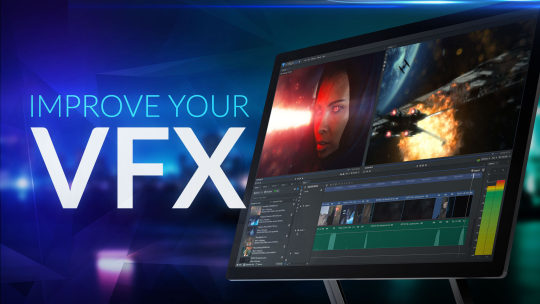
The Creative Forces Behind the Best VFX Studios
A top-tier VFX studio is not just about advanced software and tools; it’s about a team of visionaries—artists, animators, and engineers—working together to blur the lines between reality and imagination. From hyper-realistic explosions to fantastical landscapes and intricate character designs, these studios transform a director’s vision into awe-inspiring visual experiences.
Pre-Production: Collaborating to Conceptualize the Vision
The process begins in pre-production, where VFX teams collaborate with directors and cinematographers to plan and conceptualize scenes. Storyboarding and pre-visualization play a crucial role in mapping out complex sequences, ensuring every detail is meticulously crafted.
Production Techniques: From Motion Capture to Live-Action Integration
During production, VFX studios rely on techniques like motion capture, green screens, and live-action integration to gather raw material. This phase is where creativity meets precision, as actors perform alongside placeholder props or in entirely digital environments, trusting the studio to transform these into cinematic masterpieces.
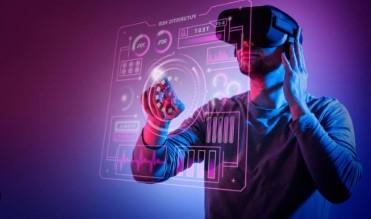
Post-Production Mastery: Bringing Scenes to Life with CGI and Compositing
Post-production is where the real magic happens. Using state-of-the-art software, the best VFX studios bring scenes to life with CGI (Computer-Generated Imagery), compositing, and simulation effects. AI and machine learning now play a pivotal role, enabling faster rendering, more realistic animations, and enhanced efficiency.
Iconic VFX Studios and Their Groundbreaking Contributions
Some renowned studios, such as Weta Digital, Industrial Light & Magic, and Framestore, have set benchmarks in the industry, contributing to iconic films like Avatar, Star Wars, and The Avengers. Their work is a testament to how technology and creativity converge to redefine storytelling.
Expanding Horizons: VFX Beyond Films into Gaming and Virtual Reality
The impact of VFX studios extends beyond films to gaming, virtual reality, and commercials, showcasing their versatility and innovation.Ultimately, the best VFX studio isn’t just a place where visuals are created; it’s where dreams are realized, and audiences are transported to worlds they never imagined possible. These studios continue to push boundaries, ensuring the magic of storytelling remains as powerful as ever.
#vfx#d#animation#cgi#vfxartist#art#danimation#blender#visualeffects#aftereffects#digitalart#motiongraphics#design#cinema#graphicdesign#kerala#dart#render#artist#photoshop#filmmaking#photography#c#film#motiondesign#gainwithxtiandela#vfxstudio#gainwithmchina#gaming#keralam
4 notes
·
View notes
Text
Certificate in VFX Course: Launch Your Career in Visual Effects

The world of Visual Effects (VFX) is where imagination meets technology. From Hollywood blockbusters to streaming series and video games, VFX artists create stunning visuals that captivate audiences. If you're looking for a fast-track way to enter this exciting industry, a Certificate in VFX Course in Pune could be your ideal starting point.
This blog will guide you through what a VFX certificate program offers, why it’s valuable, and how it can kickstart your career.
What is a Certificate in VFX Course?
A Certificate in VFX Course is a short-term, skill-focused program that trains students in essential visual effects techniques. Unlike long-term degrees, these courses provide hands-on training in industry-standard software and workflows, making them perfect for beginners and professionals looking to upskill quickly.
Why Choose a Certificate Course?
✅ Faster Entry into the Industry – Complete training in months, not years. ✅ Affordable & Focused Learning – Learn only what’s relevant to VFX jobs. ✅ Industry-Recognized Certification – Adds credibility to your resume. ✅ Placement Opportunities – Many institutes offer job assistance.
What Will You Learn in a VFX Certificate Course?
A well-structured Certificate in VFX Course in Pune covers:
1. Foundations of VFX
Understanding compositing, rotoscoping, and green screen techniques.
Basics of CGI (Computer-Generated Imagery).
2. Industry-Standard Software
Adobe After Effects – For motion graphics and compositing.
Nuke – For high-end film compositing.
Maya/Blender – For 3D modeling and animation.
Houdini – For dynamic simulations (fire, smoke, water).
3. Specialized VFX Skills
Matchmoving – Integrating CGI into live-action footage.
Particle & Dynamics – Creating explosions, dust, and weather effects.
Digital Matte Painting – Crafting realistic backgrounds.
4. Real-World Projects
Work on mock film scenes, advertisements, or game trailers.
Build a portfolio to showcase your skills to employers.
Who Should Enroll in a VFX Certificate Course?
This course is ideal for: 🎬 Film & Media Students – Enhance your skills for better job prospects. 💻 Graphic Designers & Animators – Expand into high-demand VFX roles. 🎮 Gamers & Content Creators – Learn to add professional VFX to videos. 🖌️ Creative Enthusiasts – No prior experience? Start fresh with structured training.
Why Pursue a Certificate in VFX Course in Pune?
Pune has emerged as a hub for media, animation, and VFX education, offering: ✔ Top-Notch Institutes – Learn from industry-experienced trainers. ✔ Internship Opportunities – Gain real studio experience. ✔ Affordable Cost of Living – Study without financial stress. ✔ Growing Media Industry – Pune hosts gaming studios, ad agencies, and post-production houses.
Career Opportunities After a VFX Certificate
After completing the course, you can work as:
VFX Artist (Films, OTT, Ads)
Compositing Artist
Motion Graphics Designer
3D Modeler/Animator
Roto/Paint Artist
Salaries for entry-level VFX artists start at ₹3-5 LPA, with experienced professionals earning much higher.
How to Choose the Right VFX Certificate Course?
Before enrolling, check: 🔹 Course Syllabus – Does it cover the latest software and techniques? 🔹 Faculty Experience – Are trainers from the VFX/film industry? 🔹 Placement Record – Do past students get hired? 🔹 Student Reviews – What do alumni say about the institute?
Final Thoughts
A Certificate in VFX Course in Pune is a smart investment if you want to break into the VFX industry quickly. With hands-on training, industry exposure, and a strong portfolio, you can land exciting roles in films, gaming, and advertising.
2 notes
·
View notes
Text
Update: I was slightly wrong on the specifics; Wabang's hard-to-see map places it about an hour East of Grand Teton! Click here to find that explanation.
A question I commonly hear floating around is this.
Where the hell is Wabang located?
My obnoxious answer? Grand Teton, Wyoming.
Let me convince you.
It's not outright stated in the show, but the mountains we occasionally see in the background are the Grand Tetons. We learn this via a CGW article stating that CGI was used to add them in post-production. This article also details a lot of the subtle changes the team made to the show; it's a fun read.
Sidebar: if you're interested, Outpost VFX has this incredible post detailing some of their CGI work for the show!
An iconic feature of the Grand Teton mountains is the T.A. Moulton Barn, with the Tetons perfectly backdropped behind it.
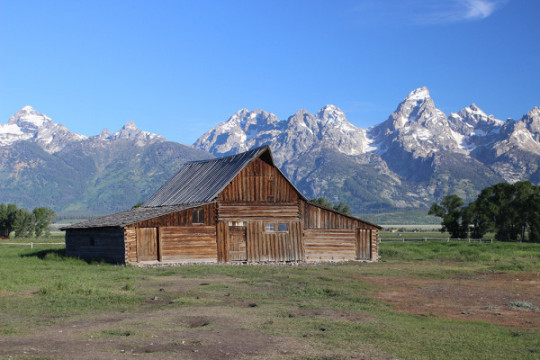
Now look at the Abbott barn.
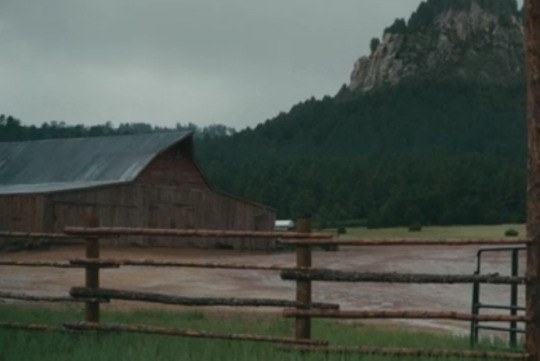
Look familiar? It's not identical, but one could argue that it's heavily inspired by the T.A. Moulton Barn.
Is the background a bit different? Yes. But those are almost certainly the Tetons behind the Abbott house.
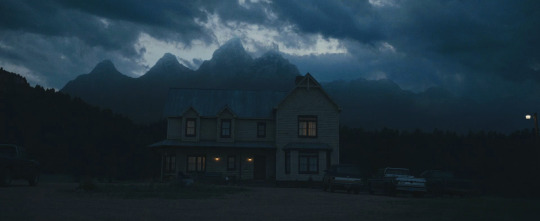
Which leads me to believe that Wabang is located close to, if not within, the Teton mountain ranges.
They have the backdrop, they have the barn, and the otherworldly, alternate universe aspect makes it possible that in this world, an early generation of the Abbotts built this iconic barn, and it is still in use.
Meaning that Wabang, Wyoming, is likely set to be right here, in the Northwestern region of the state.

This also implies that for Rhett to have gotten this jacket (assuming he attended the event himself and didn't buy it secondhand), he drove roughly 430 miles (or 860, round trip) to participate in a Rough Stock labor day rodeo in White Sulphur Springs, Montana.


I can't figure out if the jacket is dated 2016 or 2018, but regardless, that's a hell of a fucking drive for a rodeo. Talk about some dedication.
Anyways, thank you for joining another tin hat episode from yours truly, I'll be here all week 💃
30 notes
·
View notes
Text
some collected thoughts on generational/technological fandom divides regarding the Godzilla series
These points are in response to a discussion noting that there is an influx of fans who love Godzilla but basically just the Monsterverse version and have no interest in the Toho films.
I'd argue that Minus One falls on the Monsterverse side of the divide for many. Yes, there are a lot of morons who won't sit through it, but I think "Oscar-winning VFX" and the simple, emotional story make it palatable to the general Hollywood-consumer. It's a very Hollywood film at the end of the day, even if the Hollywood it learned from is a better one of decades past.
Shin Godzilla, although realized through CGI, was much more consciously imitating the suitmation era. You can see this through-line in all of the Shin films--even "Shin Evangelion," the last of of the Rebuild of Eva films (Evangelion: 3.0+1.0 Thrice Upon a Time (Japanese: シン・エヴァンゲリオン劇場版𝄇, Hepburn: Shin[a] Evangerion Gekijōban𝄇, lit. 'Shin Evangelion Theatrical Edition: 𝄇') which featured faux tokusatsu scenes as part of the metafictional climactic battle.
Anno and Higuchi ultimately went with CGI, but as fans know well, they did build an animatronic. Anno is a life-long lover of Japanese special effects, and his Shin series pays tribute to that. Yamazaki is a digital native and arguably the first Japanese Godzilla director of the true CGI era.
re: Yamazaki and the question of Japanese influence
[Godzilla Minus One is] almost totally removed from the Legendary series and contemporary Hollywood, yes, but I'd say it's as inspired by '70s-'80s Hollywood, especially Spielberg, as it is by Japanese sensibilities.
The main thing I'm getting at is the aesthetic sensibility of the effects is much more in line with contemporary Hollywood, whereas the Shin films, though they used CGI, attempted to recreate the feeling of the older shows and films. I don't sense Yamazaki looking back aesthetically, even if he is looking back historically.
11 notes
·
View notes
Note
This is so fucked up imo. I get using CGI for action scenes etc. but AI should not be used for an actor's dialect or voicing. With this logic, let's then take actors and use deepfake and they can do minimum work💀 This alone should have been an exclusion criteria but unfortunately this will become a standard in the future I am afraid.
// cgi is done by vfx artist it’s not gen ai, it’s done by human beings
also i doubt artists of all kind of people will agree with this, i hope the academy puts a stop to this, maybe not this year since the rules do not include anything regarding ai, but for next year i hope they include ai in their rules, like they fixed their roles after the andrea riseborough nomination
and adrian brody receiving buzz because he learned ‘fluent hungarian’, what a joke, hopefully this becomes viral and the members of the academy hear about it. the academy is full of artist, actors, writers, musicians, i doubt people will want to put him or the movie (since it wasn’t only their hungarian, it was also some drawings in the movie) as no.1 in their ballot after this.
.
2 notes
·
View notes
Text
State of the MCU
There's a lot of thinkpieces and YouTube videos about how the MCU is "over" or "damaged goods" after Secret Invasion.
Obviously they are trying to distract us from this talk by dropping the Loki (one of the good MCU shows) trailer today.
I think there are several different lessons to be learned by some of the failures or missteps of this period of "too much Marvel."
They went from doing three movies a year, to doing, well, a lot more content. I don't actually think that Marvel is "running out" of content. There are so many characters and storylines that have not even been touched on.
But I think Marvel got a bit excited about what it could do, without thinking about the hows of actually making the content. For example, during She-Hulk we heard from VFX artists that were overworked and underpaid that there just weren't enough hours in the day for them to make all these shows and movies. Clearly, someone at the top did not take that into consideration when greenlighting all the shows.
I think the disconnect between WandaVison and Doctor Strange in the Multiverse of Madness showed limitations in the production schedules of the various properties. The time making a show is different from making a movie. And it led to some disconnect between where the audience was and where the narrative was going.
I also think a lot of things were greenlit as a good idea without them being fully fleshed out. Secret Invasion is probably one of them. I hear Echo is another. (Feige called it "unreleaseable" which makes me wonder how bad it was, since he clearly thought Secret Invasion WAS releasable.)
Hopefully in the future they will settle into some kind of release schedule (for example it was a big deal when Marvel went from two movies a year to three and then they really seemed to have three a year down in the 2018 period). I don't know exactly how many shows they can add to that.
In 2021, we got four live action shows and 1 animated show. In 2022 we had three live action shows. And we are supposed to get three in 2023.
For the shows, I think maybe two a year is a good amount, to give the writers (Pay your writers, Disney!) and the entire team enough time to work (pay for VFX artists too!). And if you can produce two quality TV series that work as TV series, then maybe they could try for three.
I'm a bit nervous about next year because three are scheduled but one is Daredevil which is supposed to be a lot more episodes than the shows the MCU has done. Though he needs less CGI than other heroes, maybe it could work?
Though these things will all probably get pushed back due to the strikes going on now.
I also think there should be a reason that something is a TV show and not a movie. I don't like this talk of "six hour movies." That's not a thing. The format changes the experience. WandaVision and She-Hulk utilized the TV format as part of the narrative. And that's a great reason for it to be a show. But it's not the only one. (Moon Knight had a unique structure, where it was divided into two episodes in London, two episodes in Cairo, and two episodes in the Underworld. That was cool, but I would argue then it should've been released two at a time instead of week-to-week. And on Friday. I hate this Wednesday nonsense.)
I think about this shit too much.
#marvel#mcu#marvel television#wandavision#secret invasion#she-hulk#moon knight#echo#daredevil: born again#kevin feige
11 notes
·
View notes
Text
in case anybody wants to know.. this is the youtube series that got me into vfx!

it is. long they REALLy kept it going. i havent watched it in a while so i dont remember just how well their explanations were, but i did learn a lot from these guys! its a really fun series to watch if you wanna know why movies that abuse cgi almost always look worse
3 notes
·
View notes
Photo
The problem isn't simply that cgi = bad and practical effects better it's that corporations exploit cgi studios to rush out scenes in horrific working conditions in order to meet the never ending death march that is the Hollywood Blockbuster release schedule. Not helped by the fact that a lot of these blockbusters are handed off to directors who seem to resent the vfx craft and refuses to learn anything about it.
The 00s saw films like the Star Wars Prequels, Matrix, Lord of the Rings, Pirates of the Caribbean, and Speed Racer really pushing what could be done with cgi that wasn't possible with practical effects and it's been taken over as a crutch to shit out as much as possible in the shortest time while working people to death.
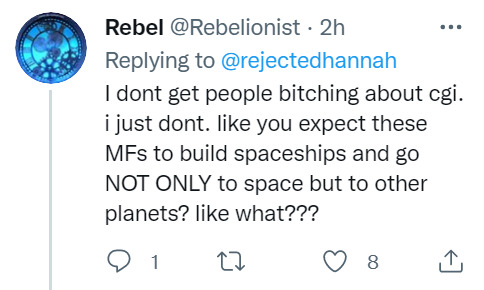
Marvel movies have completely eliminated the concept of practical effects from the movie-watching public’s consciousness
305K notes
·
View notes
Text
On Set vs. On Screen: Understanding SFX and VFX Today

Visual trickery has mesmerized audiences since the dawn of cinema, but the craft has evolved into two distinct branches: special effects (SFX) and visual effects (VFX). Knowing the difference—and when to use each—can save budgets, protect crews, and unlock jaw‑dropping moments that linger in viewers’ memories long after the credits roll. Below is a deep dive into what sets these disciplines apart, how they increasingly overlap, and why the distinction still matters in 2025’s fast‑moving creative landscape.
When and Where They Happen
Special effects are created on set, in real time. Exploding car rigs, faux rain, animatronic creatures, break‑away glass, and prosthetic makeup are all classic SFX. Actors see them, cameras capture them, and everyone on set can react in the moment.
Visual effects, by contrast, come after the shoot. They live in post‑production suites where compositors, animators, and simulation artists blend computer‑generated imagery with the original footage. Think digital dragons soaring over castles, de‑aging an actor, or erasing wires from a stunt.
Tools of the Trade
SFX tool kit
Pyrotechnics teams for safe yet spectacular fireballs
Mechanical rigs that flip vehicles or dump gallons of water on cue
Animatronics controlled by servo motors to give monsters believable movement
Makeup and prosthetics crews who turn performers into zombies, aliens, or historical figures
VFX tool kit
3‑D modeling software like Maya or Blender to build creatures or sets
Real‑time engines such as Unreal that render photoreal backgrounds while the camera rolls
Motion‑capture suits to translate an actor’s performance into a digital character
Compositing software that layers live action with CGI elements until they appear inseparable
How They Work Together
The most convincing visuals almost always blend SFX and VFX. Picture a practical explosion filmed on location. Sparks, dust, and flame‑throwers sell the impact to the actors. In post, artists add extra debris, widen the fireball, and remove safety rigs. The audience gets an unforgettable blast; no one wonders where reality ends and digital wizardry begins.
Safety, Budget, and Practicality
Risk management: A towering inferno on set can jeopardize cast and crew; a CGI inferno carries zero physical danger.
Cost curves: Small practical gags—like a window shattering—are cheap, quick, and tangible. Large‑scale destruction or otherworldly creatures often cost less in VFX than building massive rigs or animatronics.
Time pressure: Mechanical effects require rehearsals and resets. Digital effects demand render time. Smart producers weigh schedule constraints before choosing.
Storytelling Impact
Physical effects ground performances in something actors can touch, smell, and react to. That authenticity shows up on‑screen, especially in close‑ups. Digital effects, meanwhile, free creators to visualize whatever the story requires: cosmic vistas, microscopic worlds, or characters that defy the laws of biology. The choice shapes tone, pacing, and emotional resonance.
Fresh Headlines Shaping 2025
AI‑assisted pipelines – Automated rotoscoping, procedural fire, and machine‑learning facial rigs slash weeks off post schedules, letting smaller studios compete on bigger projects.
Union momentum – Following last year’s industry strikes, VFX artists have intensified calls for standardized hours and overtime protection, forcing studios to rethink delivery timelines.
Virtual production boom – LED volume stages have tripled worldwide since 2023, making it easier for indie filmmakers to capture final‑pixel backgrounds in camera.
Real‑time ray tracing in games – AAA titles now deliver near‑cinematic lighting at 60 fps, blurring the line between interactive experiences and animated films.
These shifts push creators to master both practical ingenuity and digital finesse, because the trick of the trade is no longer “either/or” but “best of both.”
Real‑World Examples Without the Jargon
Blockbuster fantasy epics still lean heavily on SFX for props and creature suits worn on set, then expand scale with VFX armies, magical energy bursts, and sky replacements.
Prestige dramas use subtle digital touch‑ups—removing modern skylines from period pieces or digitally aging a protagonist—as invisibly as makeup.
Music videos and livestream concerts increasingly rely on augmented‑reality overlays, rendering dancers into holographic forms that swirl around a real‑world stage.
AAA video games debut photoreal humans scanned from actors, while environmental artists layer procedural weather and physics‑driven smoke in real time.
Skills You Need to Thrive
Mechanical creativity: Designing gags, break‑away props, and safe pyrotechnic rigs for SFX.
Digital craftsmanship: Sculpting 3‑D models, coding physics simulations, and color‑grading shots until everything feels cohesive.
Crossover literacy: On many productions, the SFX supervisor and VFX supervisor collaborate daily. A model builder who knows camera tracking, or a compositor who understands how silicone prosthetics behave, becomes indispensable.
It’s precisely this hybrid skill set that draws students worldwide to up‑skill. Local studios in India’s tech capital have begun mentoring newcomers with project‑based labs—one reason an Animation course in Bengaluru features industry masterclasses spanning both practical effects and CG integration.
Why the Difference Still Matters
Budget negotiations – Producers must know whether to rent a rain tower or simulate the storm digitally, and what that means for insurance and crew size.
Actor performance – A real wind machine can summon genuine struggle, while green‑screen gusts may not.
Post‑production timeline – If the finale is happening in post, editors and colorists need to lock footage early so VFX can iterate.
Audience expectations – In an era of 8K TVs and VR headsets, any seam between live action and CGI stands out. Real‑world texture layered with digital polish often wins hearts and awards.
Conclusion
Whether you’re igniting a real pyre or conjuring a digital inferno, the art of illusion lies in choosing the right tool for the right moment—and melding them so gracefully the viewer never notices the hand behind the curtain. As film sets, game studios, and streaming platforms chase ever‑higher standards, demand is soaring for artists fluent in both sides of the craft. If you’re ready to claim a spot on that frontier, a vfx course bengaluru offers the perfect launchpad into a career where gears, wires, and polygons all serve one mission: turning imagination into reality.
0 notes